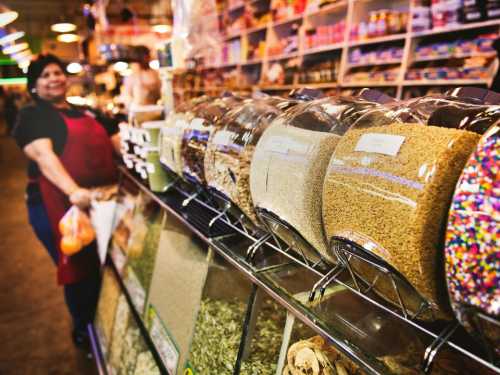
I want to tell you how you can spend less money on groceries and at the same time diversify your diet (and spend less time in the kitchen).
Make a menu for the week
This simple rule will immediately help you significantly reduce your food costs. Having thought out your meals for the week in advance, you will know exactly how much food you need, and therefore you will not buy too much, you will get rid of expired products that will eventually go to the trash. A well-thought-out menu will save you from the need to make spontaneous, thoughtless purchases, and also from the headache of “what to cook for dinner.”
The second point directly follows from this:
Make a shopping list
So, you have decided what you are going to cook, now write down in points what products you will need for this. First of all, look in the refrigerator and see what you already have (you don’t need to buy it or you can buy a little more). Then go to the store with the list and buy only what you have written down. You don’t need to take anything extra. When you don’t know what you are going to cook and go to the store without a list, you want to take this, that, and a third. As a result, you make a lot of unnecessary purchases, which increases your expenses.
Shop on a full stomach!
This psychological trick seems funny at first glance, but it works like a charm. A hungry person seeks to satisfy his hunger at any cost and unconsciously makes many rash purchases in the store. Before going to the store, be sure to have a good dinner. It really works.
Buy a whole carcass
Don't buy individual parts of a bird or fish, buy them whole. The carcass is always cheaper than its individual parts. Knowing how to divide the carcass into its component parts will allow you to provide yourself with a varied diet for several days ahead.
For example, you can use each part in different dishes: cook the breast with pesto sauce and mashed potatoes, stir-fry the thighs with rice and vegetables Asian-style, bake the wings and drumstick with potatoes, and make chicken broth from the skeleton. You can do the same with fish.
Don't throw away waste
In the previous paragraph, I said that any part of the carcass can be used. When cutting up fish, people often throw away the remains: the skeleton, head, tail, fins, skin, guts. But this is a valuable product.
Put everything together and freeze, it makes a great base for fish stock. Or you can make the stock right away and, if you don’t plan on using it right away, freeze it—the stock will keep in the freezer for months. This will save you a lot of time making the stock when you decide to make soup.
A separate article is about vegetable scraps. Don't throw away the peelings from carrots and other root vegetables; you can also use them to make vegetable broth (of course, they must be clean).
Also, don't throw away the stems from the greens, freeze them and use them when cooking the same vegetable broth.
If you have large pieces of vegetables left over, for example if you cut balls out of potatoes, you can also use them to make mashed potatoes. If you baked meat on the bone and then cut it up, don't throw away the bones themselves. Use them to make meat broth.
Inspect your refrigerator
Before you start planning your menu for the week, look in your fridge and see what’s left and will soon go bad: a little stale cheese, half an onion, leftover cream. Try combining these ingredients for a separate dish, such as a pasta sauce. Prepare them first.
Buy cheaper analogues of well-known brands
I really love this secret that few people know about. Large retail chains often produce products under their own brand. In doing so, they use the production facilities of companies that also produce products for other manufacturers.
For example, olive oil from a well-known brand and a chain store brand can be exactly the same, but at the same time differ significantly in price. Study the labels and you will notice that both of these oils are produced in the same place, by the same manufacturer, often filled in the same bottle, just with different labels, and the price is significantly different.
This happens because a well-known brand spends money on advertising and pays the same chains for shelf placement, which is reflected in the price. This can save a lot, because now chains produce almost the entire list of basic products: oils, cereals, desserts… in general, study the labels.
Reduce the amount of food you eat out and takeout. If you don't have a meal plan for the week ahead, you can opt to eat out. Needless to say, you'll save a lot more money than if you cooked your own dinner!
Or you can go to the nearest cafe during your lunch break. But it is better and more useful to prepare your food at home in advance and bring it to work in a lunchbox.
A poorly thought-out weekly menu also often leads to us simply ordering delivery. Try to avoid this and save going to a restaurant for a special occasion.
Look for discounts and bargain
This item is for hardcore fans of saving money and is not suitable for everyone. We are all used to going to a large supermarket and buying everything we need right there. However, often the price of the same products in different stores can differ significantly. Check the price of each product from your shopping list through the online catalog, find where it will be cheaper and buy it there. This, of course, will require more time for shopping and compiling separate lists.
Explore your local market. The prices are often cheaper than in the store, and you can also haggle with the seller (this option is unlikely to suit an introvert). Get to know him, chat, become a regular customer, and then ask for a discount. Or if you plan to buy several kilograms of something, you can ask for a bulk discount.
Learn to cook
Perhaps this point should have been done first, because if you don't know how to cook, don't know all the rules and processes of cooking, you are unlikely to be able to plan your menu, assemble a dish like a designer from available leftovers, or use frozen broths to make soups or sauces based on them.
Therefore, if you are new to this, it is better to learn it: knowledge of technology will help you not only reduce food costs, but also significantly reduce cooking time.






